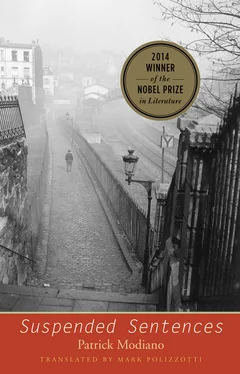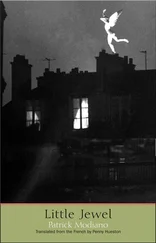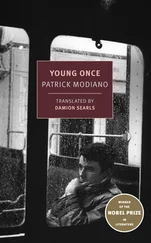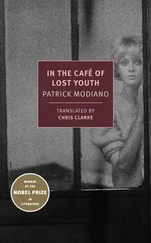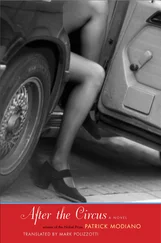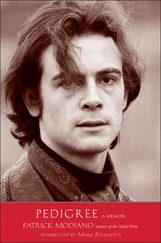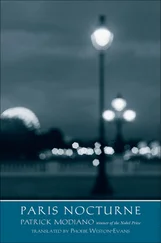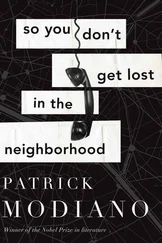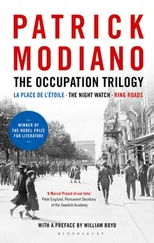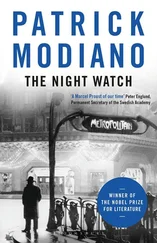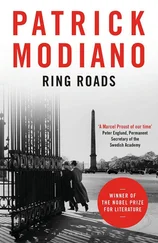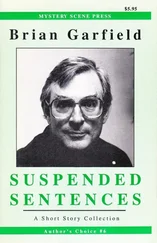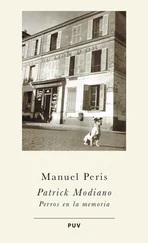She poured herself another whiskey.
“I’ll get back into the swing of it … I’ll rent a typewriter.”
She slapped the flat of her hand down on the bar.
“You leave me three pages and come back in two weeks … Then you can bring me three more pages … And so on and so forth … Sound all right to you?”
“Sure.”
“Another whiskey?”
After leaving Simone Cordier’s apartment, I didn’t immediately take the metro at Boissière. Night had fallen and I wandered aimlessly around the quarter.
I had left her three pages of my manuscript, without harboring much hope that she’d type them. She had shrugged her shoulders when I’d said I hadn’t heard from my father in five years. Apparently, nothing could surprise her about “Albert,” not even his disappearance.
It had rained. A smell of gasoline and wet leaves hovered in the air. Suddenly, I thought of Pacheco. I imagined him walking on the same sidewalk. I had gotten as far as the Hôtel Baltimore. I knew that one evening he’d gone to meet someone at that hotel and I wondered what sort of person he might have seen there. Perhaps Angel Maquignon.
The only information I’d ever gleaned about Pacheco had come by chance, in the course of a conversation, at Claude Bernard’s house on the Ile des Loups. We were having dinner with an antiques dealer from Brussels whom he’d introduced as his associate. By what circuitous path had we come, that man and I, to speak of the duc de Bellune, then of Philippe de Bellune, alias de Pacheco? The name rang a bell with him. When he was very young, he had known, on a beach in Belgium, at Heist near Zee-brugge, a certain Felipe de Pacheco. The latter lived with his grandparents, in a dilapidated villa on the dike. He claimed to be Peruvian.
Felipe de Pacheco frequented the Hôtel du Phare, where the owner, who had been a diva at the Liège Opera, sometimes gave recitals for the evening clientele. He was in love with her daughter, a very pretty blonde named Lydia. He spent his nights drinking beer with his friends from Brussels. He slept until noon. He had abandoned his studies and was living by his wits. His grandparents were too old to keep an eye on him.
And several years later, in Paris, my interlocutor had again met this boy in a drama class, where he was calling himself Philippe de Bellune. He was taking the course in the company of a girl with light brown hair. He was a dark young man with a spot on one eye. One day, this Philippe de Bellune announced that he’d just found a well-paying job through the want ads.
They had never been seen again. Neither Philippe de Bellune nor the girl with light brown hair. It must have been the winter of 1942.
I scoured the job offers placed in the newspapers that winter:
Several young persons needed for lucrative work, immediate payment, no special qualifications required. Write to Delbarre or Etève, Hôtel Baltimore, 88-bis Avenue Kléber, 16th. Or come to that address after 7 p.m.
I recall a Hôtel de Belgique on Boulevard Magenta, not far from the Gare du Nord. It’s the area where my father spent his childhood. And my mother arrived in Paris for the first time at the Gare du Nord.
Today, I felt like going back to that neighborhood, but the Gare du Nord seemed so far away to me that I gave up. Hôtel de Belgique … I was sixteen years old when my mother and I washed up one summer in Knokke-le-Zoute, like two drifters. Some friends of hers were kind enough to take us in.
One evening, the two of us were walking along the large dike at Albert-Plage. We had left behind the casino and an area of dunes past which began the dike of Heist-sur-Mer. Did we pass by the Hôtel du Phare? On our way back, via Avenue Elisabeth, I had noticed several abandoned villas, one of which might have belonged to Felipe de Pacheco’s grandparents.
Last night, I accompanied my daughter to the neighborhood around Les Gobelins. Heading back, the taxi took Rue de la Santé, where a café of the type that used to carry a sign saying WOOD COAL SPIRITS was bathed in green light. On Boulevard Arago, I couldn’t keep my eyes off the dark and interminable wall of La Santé prison. It was there that they used to set up the guillotine, back when. Once again I thought of my father, his release from the warehouse on the Quai de la Gare, and of Pagnon, who no doubt had come to fetch him that night. I knew that Pagnon himself had been imprisoned at La Santé in 1941, before being freed by “Henri,” the head of the Rue Lauriston gang.
The taxi had reached Denfert-Rochereau and taken the avenue that runs past Saint-Vincent-de-Paul hospital, the Observatoire, and the Bureau des Longitudes. It headed for the Seine. In my dreams, I often take this route: I emerge from a place of detention that might be La Santé or the warehouse on the Quai de la Gare. It’s night. Someone is waiting for me, in a large automobile with leather seats. We leave this neighborhood of hospitals, convents, wine markets, leather markets, and prisons, and head for the Seine. The instant we touch the Right Bank, after crossing the Pont du Carrousel and the grand archways of the Louvre, I breathe a sigh of relief. I have nothing more to fear. We’ve left the danger zone behind us. I’m perfectly aware it’s only a respite. Later on, I’ll be called to account. I feel a certain guilt, the reason for which remains vague: a crime to which I was an accomplice or witness, I couldn’t really say. And I hope this ambiguity will spare me from punishment. What does this dream correspond to in real life? To the memory of my father who, under the Occupation, had also experienced an ambiguous situation: arrested in a roundup by French detectives without knowing what he was guilty of, and freed by a member of the Rue Lauriston gang? The latter used several deluxe automobiles that their former owners had abandoned in the exodus of June 1940. “Henri” drove a white Bentley that had belonged to the duc de Cadaval, and Pagnon a Lancia that the German writer Erich Maria Remarque, departing for America, had left with a garage mechanic on Rue La Boétie. And it was no doubt in Remarque’s purloined Lancia that Pagnon had come for my father. How strange it must have been to walk out of the “hole”—as my father called it — and find yourself in one of those automobiles that smelled of leather, slowly crossing Paris toward the Right Bank after curfew … But sooner or later, everyone is called to account.
That dream I often have of a car ride from the Left Bank to the Right, in unsettled circumstances, is something that I, too, experienced, when I ran away from school in January 1960, age fourteen and a half. The bus I’d taken at La Croix de Berny dropped me off at the Porte d’Orléans, in front of the Café de la Rotonde, which occupied the ground floor of one of the buildings massed along the periphery. On the rare occasions when we were let out for a day, we had to assemble on Monday morning at seven in front of the Café de la Rotonde and wait for the bus that would bring us back to school. It was a kind of luxuriously appointed correctional facility for delinquents, castoffs from rich families, illegitimate children born to women they used to call “tarts,” or children abandoned during a trip to Paris like unwanted luggage: such as my bunkmate, the Brazilian Mello Rodrigues, who hadn’t heard from his parents in over a year … In order to teach us the discipline that our “families” hadn’t instilled in us, the administration practiced a military academy — style rigor: parade marches, morning flag salutes, corporal punishment, standing at attention, evening inspections of the dormitories, countless laps around the fitness trail on Thursday afternoons …
That Monday, January 18, 1960, I followed the reverse path: from the Café de la Rotonde — so lugubrious on Monday mornings in winter, when we went back to the “hole” via Montrouge and Malakoff — I took the metro to Saint-Germain-des-Prés. At Chez Malafosse, the Danish girl said:
Читать дальше
